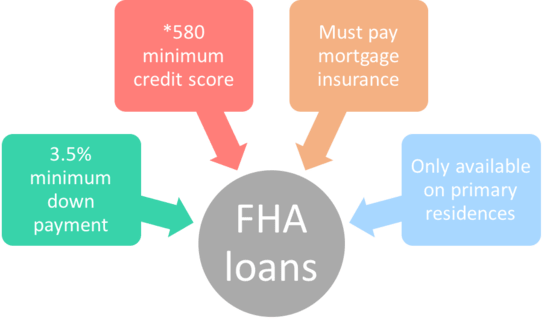The Financial Crisis Query Commission found that in 2008, GSE loans had a delinquency rate of 6. 2 percent, due to their conventional underwriting and credentials requirements, compared with 28. 3 percent for non-GSE or personal label loans, which do not have these requirements. Moreover, it is not likely that the GSEs' enduring affordable housing goals motivated lending institutions to increase subprime financing.

The objectives came from in the Real estate and Community Advancement Act of 1992, which passed with frustrating bipartisan assistance. Despite the relatively broad required of the inexpensive housing objectives, there is little evidence that directing credit toward borrowers from underserved communities triggered the housing crisis. The program did not substantially change broad patterns of mortgage lending in underserviced communities, and it operated quite well for more than a decade prior to the personal market began to heavily market riskier home loan items.
As Wall Street's share of the securitization market grew in the mid-2000s, Fannie Mae and Freddie Mac's income dropped considerably. Determined to keep shareholders from panicking, they filled their own financial investment portfolios with dangerous mortgage-backed securities bought from Wall Street, which generated higher returns for their shareholders. In the years preceding the crisis, they also started to decrease credit quality standards for the loans they bought and guaranteed, as they attempted to complete for market share with other personal market participants.
These loans were generally come from with big down payments but with little documents. While these Alt-A home loans represented a small share of GSE-backed mortgagesabout 12 percentthey was accountable for in between 40 percent and half of GSE credit losses throughout 2008 and 2009. These mistakes combined to drive the GSEs to near personal bankruptcy and landed them in conservatorship, where they stay todaynearly a decade later on.
And, as timeshare trade explained above, overall, GSE backed loans performed much better Click for more info than non-GSE loans throughout the crisis. The Community Reinvestment Act, or CRA, is developed to resolve the long history of prejudiced financing and encourage banks to help meet the requirements of all debtors in all sectors of their neighborhoods, particularly low- and moderate-income populations.
Our What Do I Need To Know About Mortgages And Rates Statements
The central idea of the CRA is to incentivize and support feasible personal lending to underserved communities in order to promote homeownership and other neighborhood financial investments - how is the compounding period on most mortgages calculated. The law has actually been modified a variety of times since its initial passage and has ended up being a foundation of federal neighborhood development policy. The CRA has actually helped with more than $1.
Conservative critics have argued that the need to fulfill CRA requirements pushed loan providers to loosen their lending standards leading up to the real estate crisis, efficiently incentivizing the extension of credit to unjust customers and sustaining an unsustainable real estate bubble. Yet, the proof does not support this story. From 2004 to 2007, banks covered by the CRA originated less than 36 percent of all subprime home mortgages, as nonbank loan providers were doing most subprime lending.
In overall, the Financial Crisis Inquiry Commission identified that just 6 percent of high-cost loans, a proxy for subprime loans to low-income debtors, had any connection with the CRA at all, far below a threshold that would indicate considerable causation in the real estate crisis. This is due to the fact that non-CRA, nonbank lending institutions were often the culprits in some of the most unsafe subprime lending in the lead-up to the crisis.
This is in keeping with the act's fairly restricted scope and its core function of promoting access to credit for qualifying, traditionally underserved borrowers. Gutting or removing the CRA for its supposed role in the crisis would not only pursue the incorrect target but likewise held up efforts to lower discriminatory home mortgage lending.
Federal real estate policy promoting cost, liquidity, and access is not some ill-advised experiment but rather an action to market failures that shattered the housing market in the 1930s, and it has actually sustained high rates of homeownership since. With federal support, far greater numbers of Americans have enjoyed the advantages of homeownership than did under the free enterprise environment before the Great Anxiety.
Some Known Details About How Can Mechanics Leins Achieve Priority Over First Mortgages
Rather than concentrating on the threat of government support for home mortgage markets, policymakers would be Click for info better served examining what most professionals have actually determined were causes of the crisispredatory lending and poor guideline of the financial sector. Putting the blame on housing policy does not speak to the facts and risks turning back the clock to a time when most Americans might not even imagine owning a house.
Sarah Edelman is the Director of Real Estate Policy at the Center. The authors want to thank Julia Gordon and Barry Zigas for their practical comments. Any errors in this quick are the sole duty of the authors.
by Yuliya Demyanyk and Kent Cherny in Federal Reserve Bank of Cleveland Economic Trends, August 2009 As rising home foreclosures and delinquencies continue to weaken a financial and financial healing, an increasing amount of attention is being paid to another corner of the home market: commercial genuine estate. This short article goes over bank direct exposure to the industrial realty market.
Gramlich in Federal Reserve Bank of Kansas City Economic Evaluation, September 2007 Booms and busts have actually played a prominent role in American economic history. In the 19th century, the United States benefited from the canal boom, the railway boom, the minerals boom, and a financial boom. The 20th century brought another monetary boom, a postwar boom, and a dot-com boom (how much is mortgage tax in nyc for mortgages over 500000:oo).

by Jan Kregel in Levy Economics Institute Working Paper, April 2008 The paper provides a background to the forces that have produced the present system of property real estate financing, the reasons for the existing crisis in home mortgage financing, and the impact of the crisis on the general financial system (what are the interest rates on 30 year mortgages today). by Atif R.
Not known Incorrect Statements About Which Mortgages Have The Hifhest Right To Payment'
The recent sharp boost in mortgage defaults is significantly magnified in subprime postal code, or zip codes with a disproportionately large share of subprime borrowers as . what happened to cashcall mortgage's no closing cost mortgages... by Yuliya Demyanyk in Federal Reserve Bank of St. Louis Regional Economic Expert, October 2008 One may expect to find a connection in between borrowers' FICO ratings and the occurrence of default and foreclosure during the existing crisis.
by Geetesh Bhardwaj and Rajdeep Sengupta in Federal Reserve Bank of St - what is the concept of nvp and how does it apply to mortgages and loans. Louis Working Paper, October 2008 This paper demonstrates that the reason for prevalent default of mortgages in the subprime market was an abrupt turnaround in your house price appreciation of the early 2000's. Using loan-level data on subprime home mortgages, we observe that the majority of subprime loans were hybrid adjustable rate home mortgages, created to impose significant financial ...
Kocherlakota in Federal Reserve Bank of Minneapolis, April 2010 Speech prior to the Minnesota Chamber of Commerce by Souphala Chomsisengphet and Anthony Pennington-Cross in Federal Reserve Bank of St. Louis Review, January 2006 This paper explains subprime financing in the home loan market and how it has developed through time. Subprime lending has presented a substantial quantity of risk-based rates into the mortgage market by developing a myriad of costs and product options mainly figured out by debtor credit rating (mortgage and rental payments, foreclosures and bankru ...